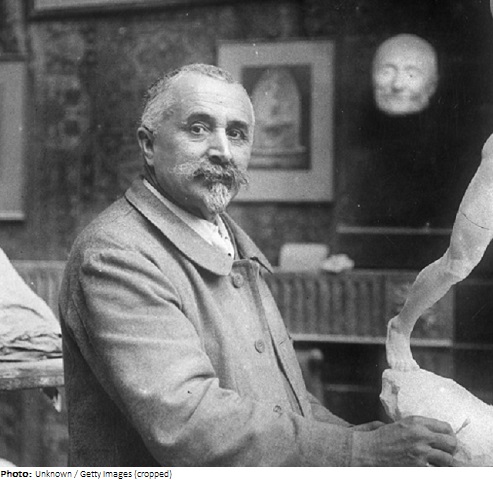Henri Gréber

Biographical information
| Roles | Competed in Olympic Games |
|---|---|
| Sex | Male |
| Full name | Henri Désiré Léon•Gréber |
| Used name | Henri•Gréber |
| Born | 28 May 1854 in Beauvais, Oise (FRA) |
| Died | 4 June 1941 in Paris XVIe, Paris (FRA) |
| NOC |  France France |
Biography
Henri Léon Gréber was a French sculptor and the father of the architect Jacques Gréber. He also worked as a medalist and ceramist in the classic-realistic style and was mainly active in the United States. He was best known for four equestrian statues for Harbor Hill, which formed the J. C. Nichols Memorial and were later moved to Country Club Plaza in Kansas City, and for a copy of Rodin’s “The Kiss,” which is still exhibited at the Philadelphia Rodin Museum. He also worked as a designer of fountains for parks planned by his son Jacques in the United States.
Gréber was initially educated at the ceramic company of his father Johan-Peter in Beauvais before moving to Paris. There he studied with well-known sculptors, amongst others, at the Académie Julian. He led studios in Paris and worked on the statue of Joan of Arc in the Place des Pyramides together with his teacher Emmanuel Frémiet. At times he lived in Colombia. From 1910 to 1933 he worked at the Musée départemental de l’Oise. In 1904 he became a Knight of the Legion of Honor. For the work The Winner above all the statue Le victorieux (The Victorious) can be considered, a bronze made in different sizes (59 cm, 83 cm). In a particularly martial manner appears Le Bellovaque vainqueur (The Victorious Bellovacus). It was first presented in the Salon des Artistes Français in 1911 and erected in the following year in gilded bronze near the train station of his hometown Beauvais. It was melted down during the Second World War. Smaller casts, however, remain extant.
Results
| Games | Discipline (Sport) / Event | NOC / Team | Pos | Medal | As | |
|---|---|---|---|---|---|---|
| 1924 Summer Olympics | Art Competitions |  FRA FRA |
Henri Gréber | |||
| Sculpturing, Open (Olympic) | ||||||
| Sculpturing, Open (Olympic) |